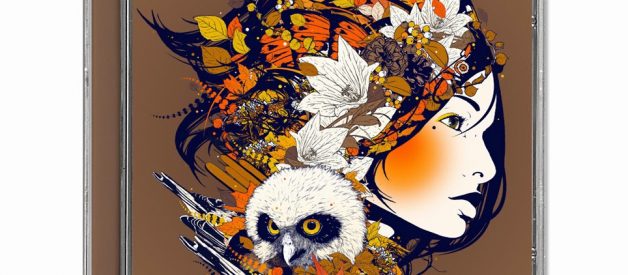 Artwork by Marumiyan. Posted with permission of the artist. All rights reserved. Source: Marumiyan Music Portfolio
Artwork by Marumiyan. Posted with permission of the artist. All rights reserved. Source: Marumiyan Music Portfolio
Most students who listen to the homework edits of Nujabes on YouTube, will tend to get recommendations of a similar Japanese artist. DJ Okawari. DJ Okarwari is quite different from Nujabes in the sense that he doesn?t rely so heavily on samples. Most of their works are original pieces. This is not to diminish the power of Nujabes?s artistry by any means, but to show that they have different approaches to music. And yet, both artists have that same soothing and spiritual quality that all composers hope that their works can have.
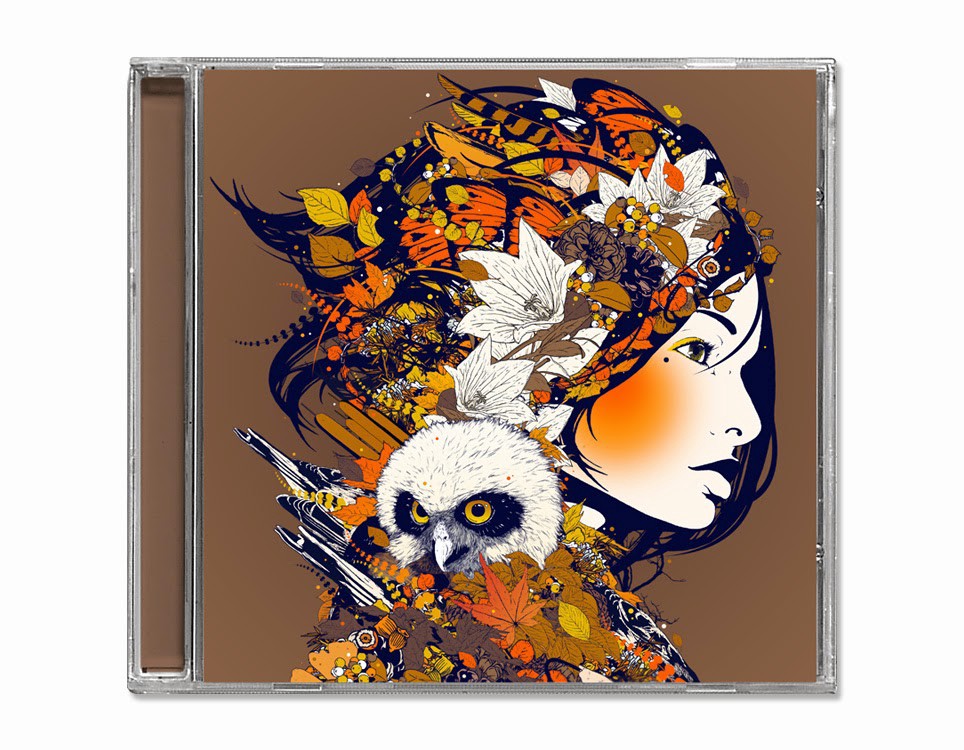 Artwork by Marumiyan. Posted with the permission of the artist. All rights reserved. Source: Marumiyan Music Portfolio
Artwork by Marumiyan. Posted with the permission of the artist. All rights reserved. Source: Marumiyan Music Portfolio
A strong part of the appeal in DJ Okawari is in the magnificent covers he has on his albums. Each featuring a raven-haired woman, whose head is covered in leaves, flowers, birds, butterflies and other varieties of nature?s creatures. These artistic covers are courtesy of Marumiyan, whose mesmerizing graffiti-like pictures are visual embodiments of imagination. These covers, I feel, add a great deal of depth into the concepts of these songs. An idea rooted in nature?s serenity, but brought to life by human passion.
Much like Nujabes, DJ Okawari cannot be fully appreciated on a first listening. One must listen to his pieces many times to really feel the emotional weight behind them, though I imagine that most people will be listening to Okawari?s rhythms on loop for much of their free (and homework) time.
DJ Okawari has three major concept albums worth discussing, Diorama, Mirror, and Kaleidoscope. All three of these titles have something to do with vision. A diorama is a three-dimensional model used to often showcase a landscape. A mirror reflects images, and usually, images of yourself. A kaleidoscope is a tool one uses to see shifting colors. Now it is entirely up to interpretation as to why these particular titles were chosen, or if they really mean anything at all. I personally consider these to be concept albums, or albums based around a theme or idea. A showcase, a reflection, and a ethereal vision. All of these ideas can overlap, DJ Okawari is not an artist to be restricted. What makes each of the three albums stand out, in spite of their similarities, are their variations. Each album inhabits its own distinct universe.
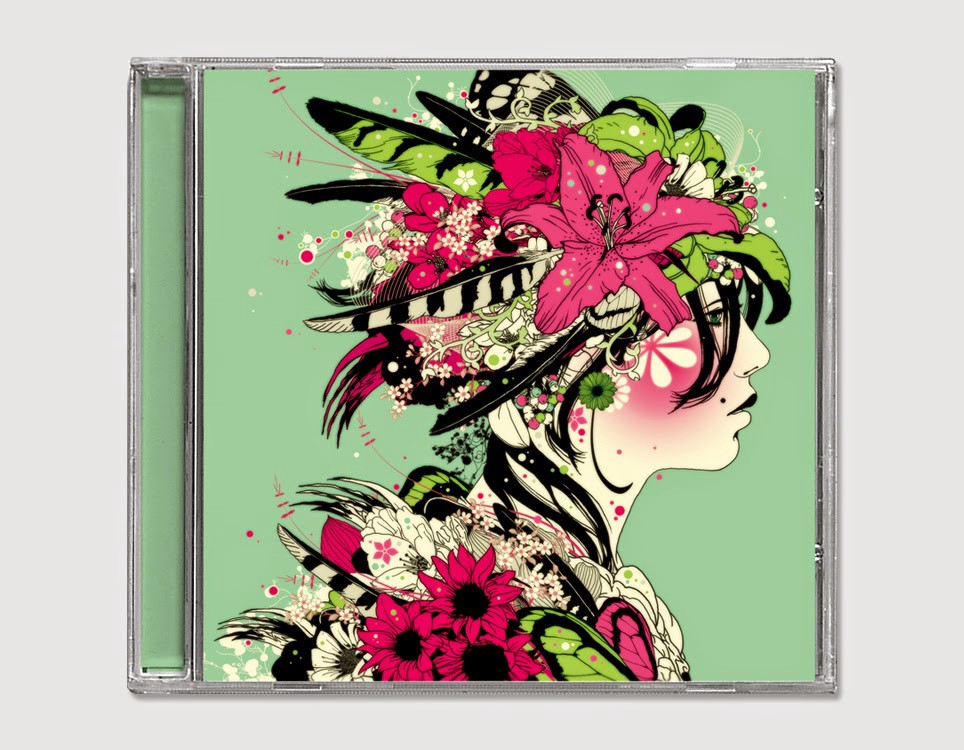 Artwork by Marumiyan. Posted with the permission of the artist. All rights reserved. Source: Marumiyan Music Portfolio
Artwork by Marumiyan. Posted with the permission of the artist. All rights reserved. Source: Marumiyan Music Portfolio
The first album, Diorama, is really about building atmosphere with the various tracks put together. All parts support the whole. While there are some tracks that can be heard individually, for this album, it is best amplified when put all together. This atmosphere is that of the piano accompanied by hip hop beats. Take ?Ring?, which reminds me of the ripples across a lake, the cute ?One for U? that sounds almost a lullaby, or the actively enlightening ?Colors of Life? contrasted with the mellow ?Evening Comes?. Though the backbone pieces that really provide the soul to this album are the piano opus ?Bluebird Story? and the R&B beauty ?Aurora?. ?Bluebird Story? which features Jumelles (on the electric piano) feels like a tone poem for a bluebird?s flight through the air: tranquil and exciting. The notes in this piece remind me a great deal of Joe Hisaishi. ?Aurora? features vocalist Eri Kamiya, whose soulful voice opens the song with the piano, before the bass bumps its way in. Both of these songs have outside artists, which may explain their uniqueness to me. As a debut demonstration of talent, Diorama establishes DJ Okawari as an artist worth our attention.
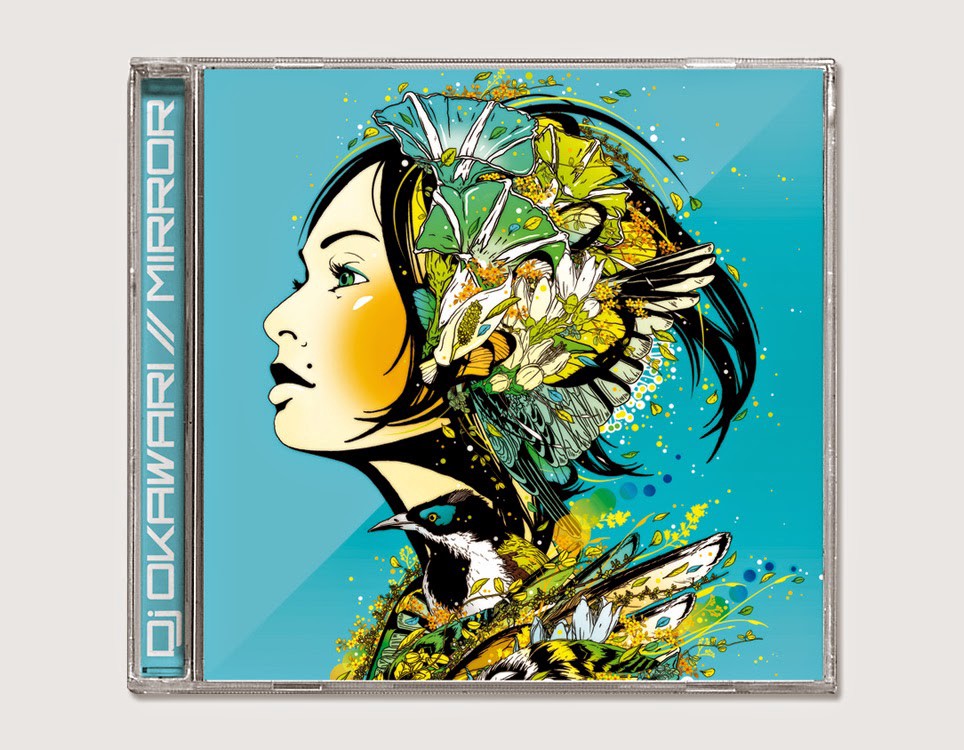 Artwork by Marumiyan. Posted with the permission of the artist. All rights reserved. Source: Marumiyan Music Portfolio
Artwork by Marumiyan. Posted with the permission of the artist. All rights reserved. Source: Marumiyan Music Portfolio
The second album, Mirror, is far more refined in terms of building a more evolved sound. This is not to say that Diorama was bad by any means, because it was excellent, but it was his debut album, so some aspects of it felt a bit rough and repetitive. On Mirror, you can hear DJ Okawari becoming more comfortable with the technology available, and being better able to express his ideas through the music. This is made immediately clear through the brilliant starting track, ?Sound Of Silence? (not Simon and Garfunkel?s ?The Sounds Of Silence?). It is sung with Kaori?s soothing voice, and a bouncy bass throughout. The bass is really the best thing about that song. This is immediately followed by the very popular ?Luv Letter?, a great piece, that resembles what DJ Okawari does best artistically. The power of a piano expressed through a hip-hop sensibility. The song is so popular that it was even used by Japanese ice skater Daisuke Takahashi during the 2009 Winter Olympics. The third track is Amadori?s brilliant cover of the 90?s soul classic ?You Gotta Be? by Des?ree. The next vocal song, and my favorite piece, is ?Pack Light? with vocals by Eriko. The song has a sliding dramatic piano theme of inspiration that uses the ?Over The Rainbow? song from The Wizard of Oz as a metaphor. ?Afterschool? is an ambiance piece, much like most of the tracks on Diorama. The setting here is not a forest, however, but with children free for their afternoons. It is meant to be nostalgic. ?Following The Dream? is the shortest track on the album, it is devoid of any natural settings, but is quietly attractive. ?Free Bird? (not Lynyrd Skynyrd ?s ?Freebird?) is yet another vocal song on the album, and like ?Pack Light? is an uplifting piece. Though ?Free Bird? is more about independence, with lyrics like ? You see, I?m not your mother. I?m not your sister or lover. I?m just a woman with my favorite name.? ?Sweet Light? is very catchy and very Japanese, with a sax added in for good measure. The last vocal track ?All I Have?, reminds me of Macy Gray?s ?I Try?, and it makes me a bit nostalgic for the days when these soulful tunes were the most popular songs on the radio. ?Minamo?, composed by Tsukino Sora, who also wrote ?Luv Letter? sounds very fitting for a Miyazaki film or a Final Fantasy game. ?Evening Comes 2? is better than the original and good way to close out the album. All in all, Mirror is a grand improvement over Diorama and is an achievement in and of itself for the nu-jazz genre.
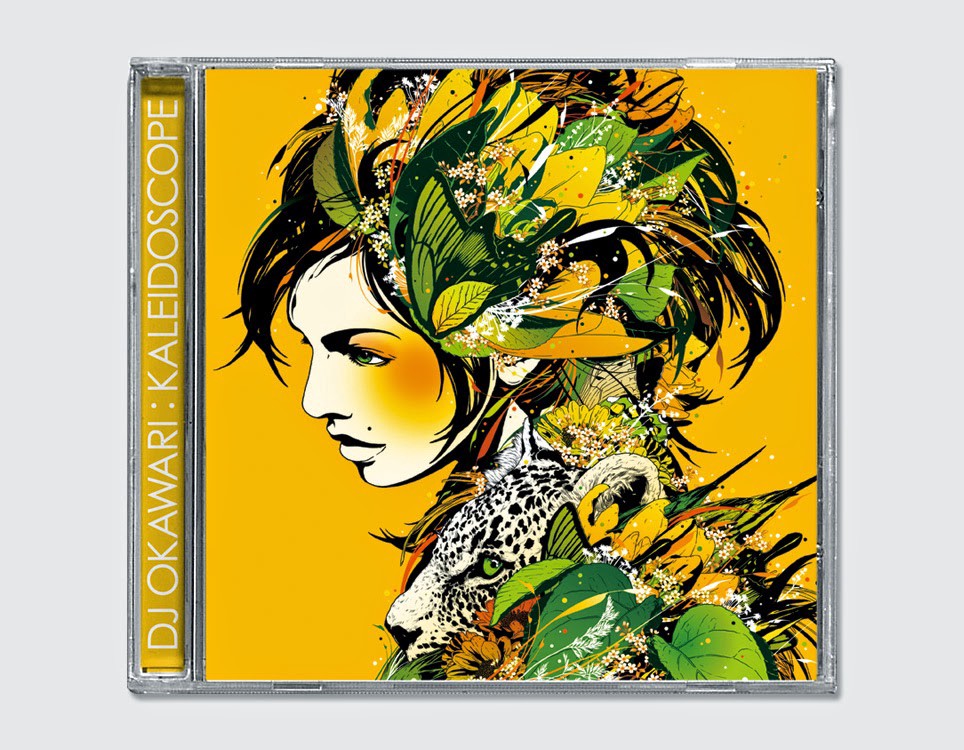 Artwork by Marumiyan. Posted with the permission of the artist. All rights reserved. Source: Marumiyan Music Portfolio
Artwork by Marumiyan. Posted with the permission of the artist. All rights reserved. Source: Marumiyan Music Portfolio
The third album, Kaleidoscope, attempts to go farther than either Diorama or Mirror did. This may make it the best album by far, at least, from a technical standpoint. The opening track, ?Encounter? features DJ Okawari?s trademark piano and hip-hop beat, but a variety of other sounds. Just what are we encountering? Who knows. Perhaps the album itself. Like Mirror, there are many vocal tracks here. The first, ?Brown Eyes?, has a unique piece, where you can already hear the improvement in electronic sounds. ?U? is a head nodding and sweet tribute to life with the sailing voice of Stacy Epps. I love the sassy overtones of Amanda Diva?s voice in ?Brighter Side,? whose theme of overcoming struggles is a real tribute to black music. ?Change The World? featuring Woong San, is among one of DJ Okawari?s most melancholy. ?Another Sky? may be DJ Okawari?s jazzy vision of space travel. ?Represent? stands out with the longing violin strings of Chieko Kinbara. ?The Bonds? is the most atmospheric track, and like ?Change The World? is also quite melancholy.
?Flower Dance? and ?A Cup Of Coffee? were both released as a single originally, and are DJ Okawari?s best piano tracks to date. Both songs make good use of sampling, including lines one would expect to hear from Old Hollywood movies. ?A Cup Of Coffee? sounds like a song I would hear playing in the background of a Panera Bread or a Barnes&Noble. It is quite relaxing. ?Flower Dance?, like ?Luv Letter? is one of DJ Okawari?s most popular songs ever, and I?m basing this on over 2 million viewer count on its YouTube video. There is so much to love about this song, from the strange opening about imitation flowers, to some of the best piano handling of DJ Okawari?s career. ?Kaleidoscope? is probably the best vocal song on the album. The use of beats and repetition is very reminiscent of Nujabes. This is the first DJ Okawari album in which a song shares the same title as the album. We may not know exactly what the mirror and diorama are, but what of the kaleidoscope? It is the soul, where inspiration, intelligence and the most natural emotions dwell. I could think of no better song to summarize DJ Okawari?s music. The album closes with ?Peacock?, which is instantly memorable. The colorful plumage of a male peacock, sure enough, can be compared to both the music of DJ Okawari and Marumiyan?s album covers.
Like Nujabes, not much is known about DJ Okawari. He is a mystery (at least to English speakers who can?t read his blog). Although, on his online profile he has said a few words:
?The Music is Any Moments in Life?
Represents the sound of things we felt in the life I hope things in life happen to be the sound of his listeners. ?Comfort before falling asleep,? ?dignified feeling when you open the book,? Increasing emphasis on creating a sound relationship between the scenes and emotions like that. ?DJ OKAWARI? is named not always be satisfied, Always seeking something new, always comes from just keep trying.
It?s roughly translated, but you get what he?s trying to say. It reminds me of the time when I greeted a stranger wearing a very big pair of headphones. I can?t quite recall everything we spoke about, except for this statement: ?Music is the soundtrack of life.?
I would like to believe that DJ Okawari lives by this idea.
At the end of the day, we do not need his 200-page biography or details in Rolling Stone about what he eats for breakfast. DJ Okawari has already expressed himself perfectly through his music. It is art that will forever reside in the cultural womb of creativity and compassion. DJ Okawari challenges us all to experience these wonders of life, as he said in ?Pack Light?,
Look out of the window, I just wanna know,
What?s there, over the rainbow??
Originally published at http://sansuthecat.blogspot.com on August 1, 2014.
